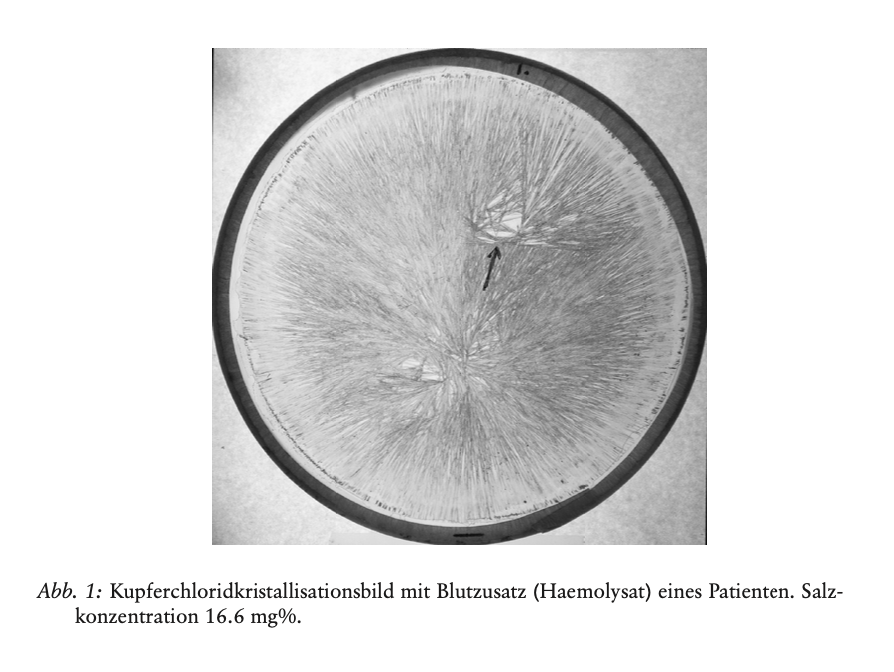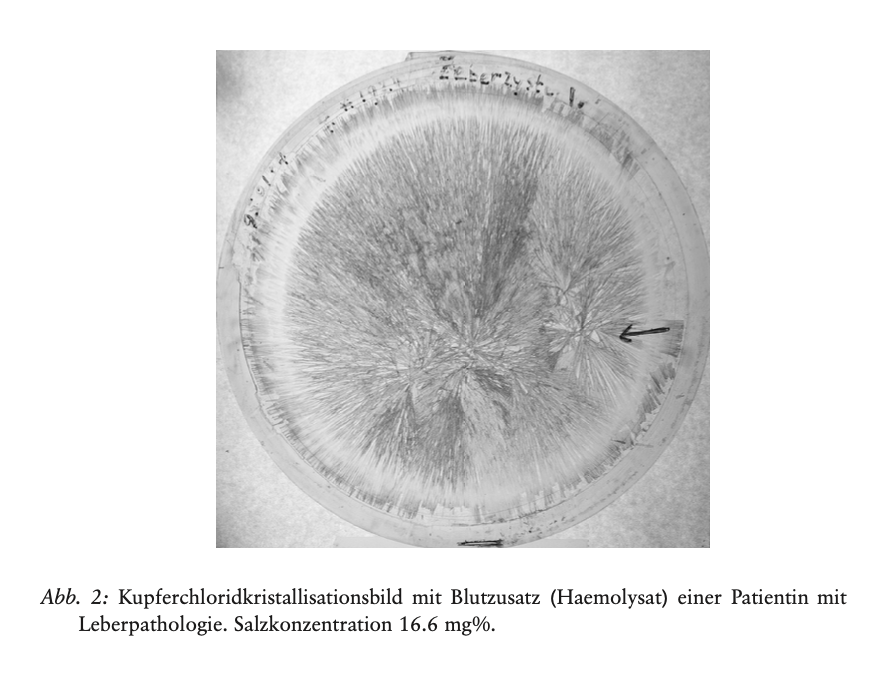Stoff und Bild bei der Methode der Empfindlichen Kristallisation
Export Article Citation as
- Plain text
- BibTeX
- RIS format
- Download price : € 6.00
Abstract:
Since 1930, the Sensitive Crystallization method has been used for inves- tigating quality in foods, nutrients and medicinal plants, as well as for ex- amining human blood in medicine. The method involves interpreting pic- torial images (crystallization images) in the context of empirical research. Learning to “read” the images through a correlative approach needs to be completed by investigating how the crystallization pictures come into be- ing. In this article, the various steps that have been taken in research over the past decades are retraced. Referring to the processes that take place in the crystallization dish during the evaporation of copper chloride solution and its additives, particular consideration is given to the pre-crystalline phase when supersaturation increases and to the phase change into the crystalline state. The result is pictorial in nature. It has the character of an image with its own conformity to natural laws that differ from those of the material processes in the salt solution and dissolved substances. The image character of the crystallization picture cannot be explained from the isolated facts of the material components and the experimental setup. These are only conditions, not causes of the emergence of the image. The concepts of self-organization and emergence as thinking-tools for under- standing the experimental results are discussed.


